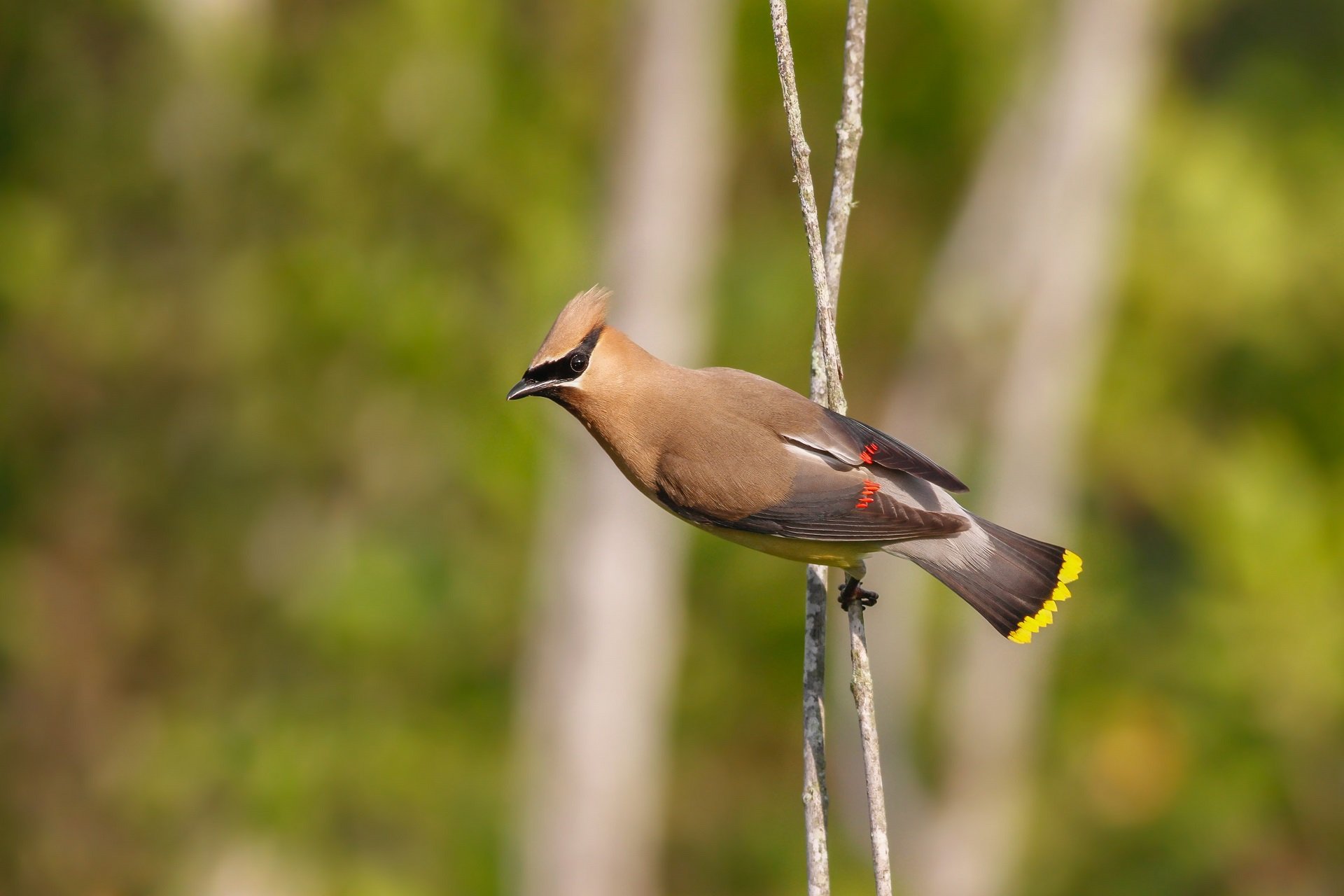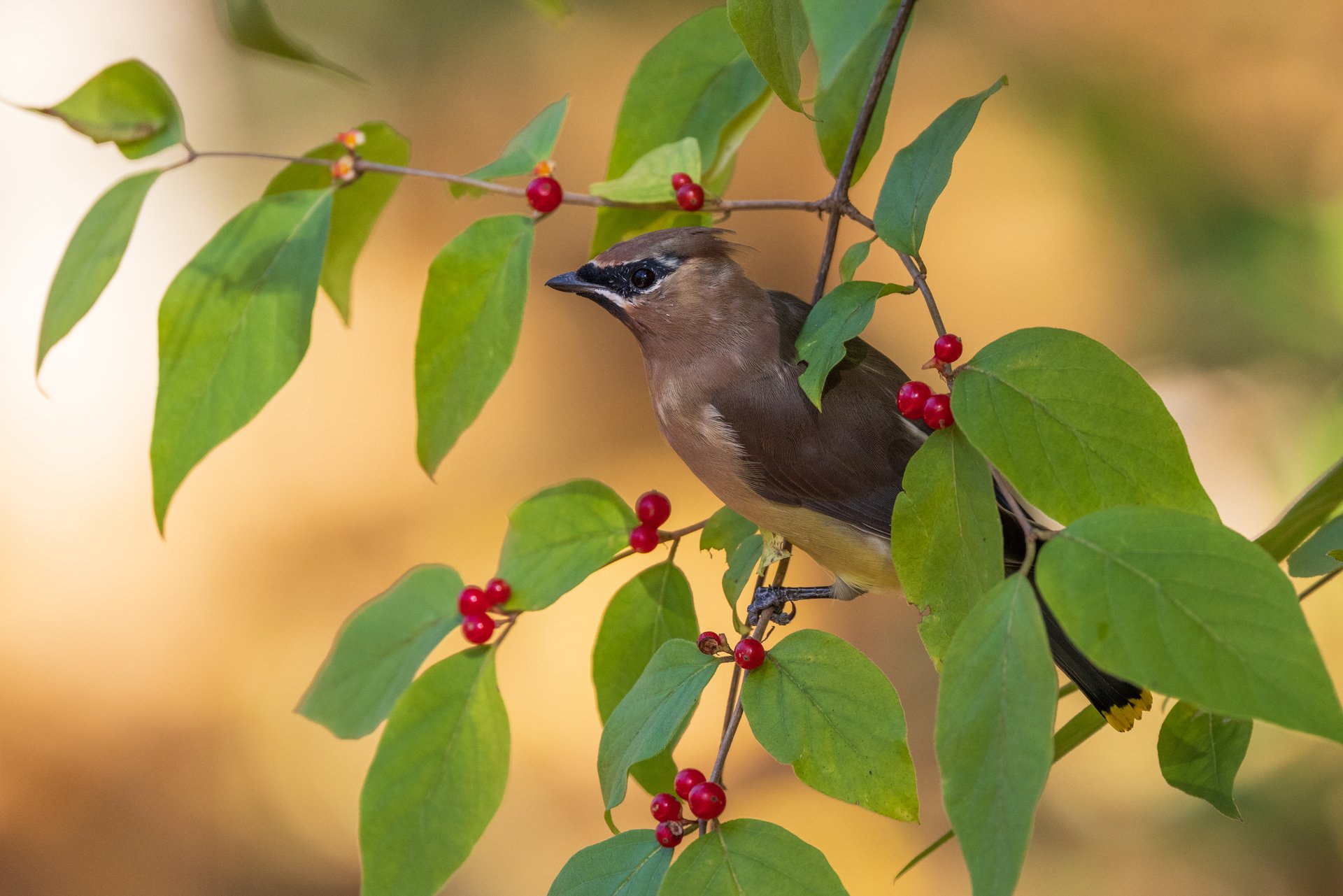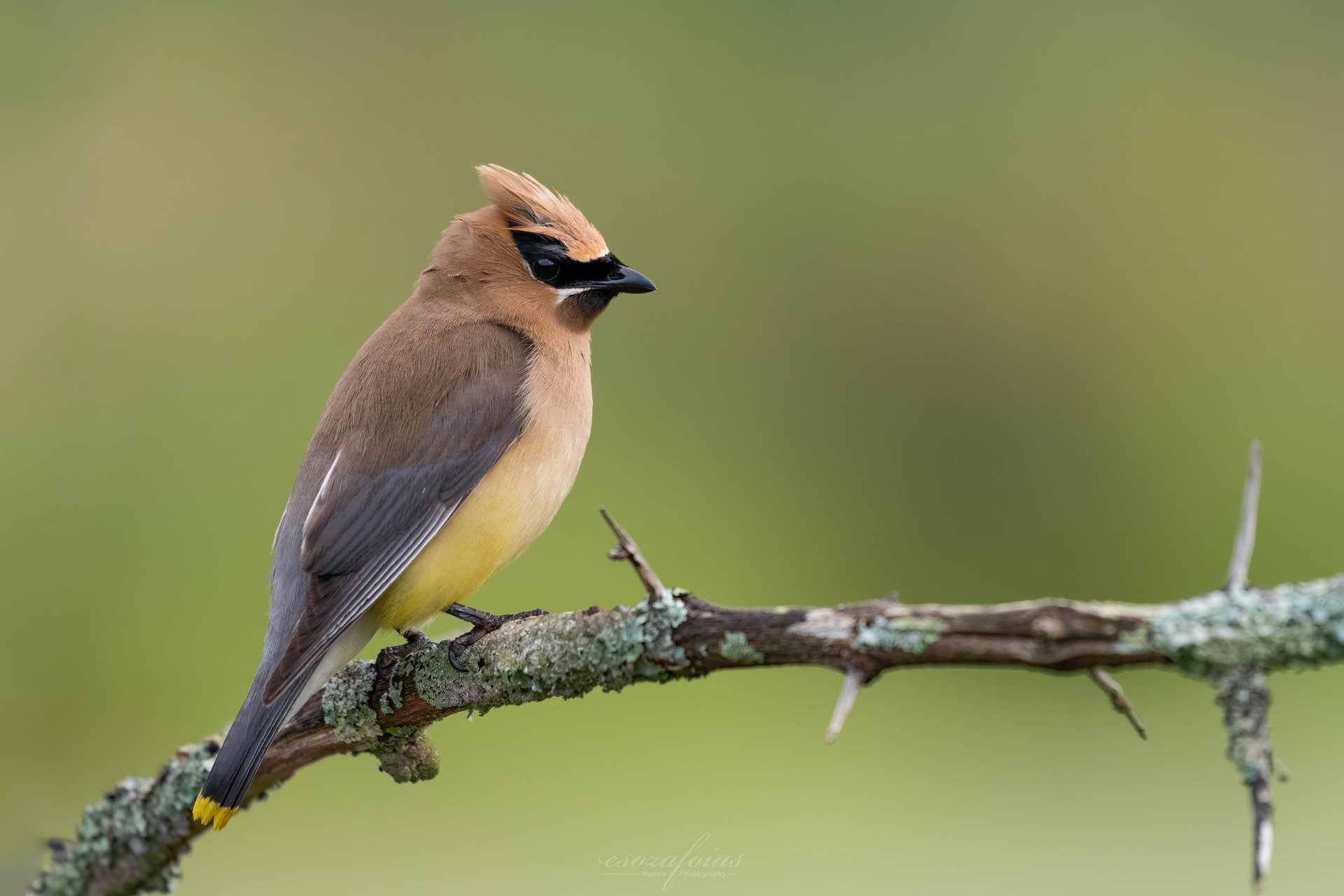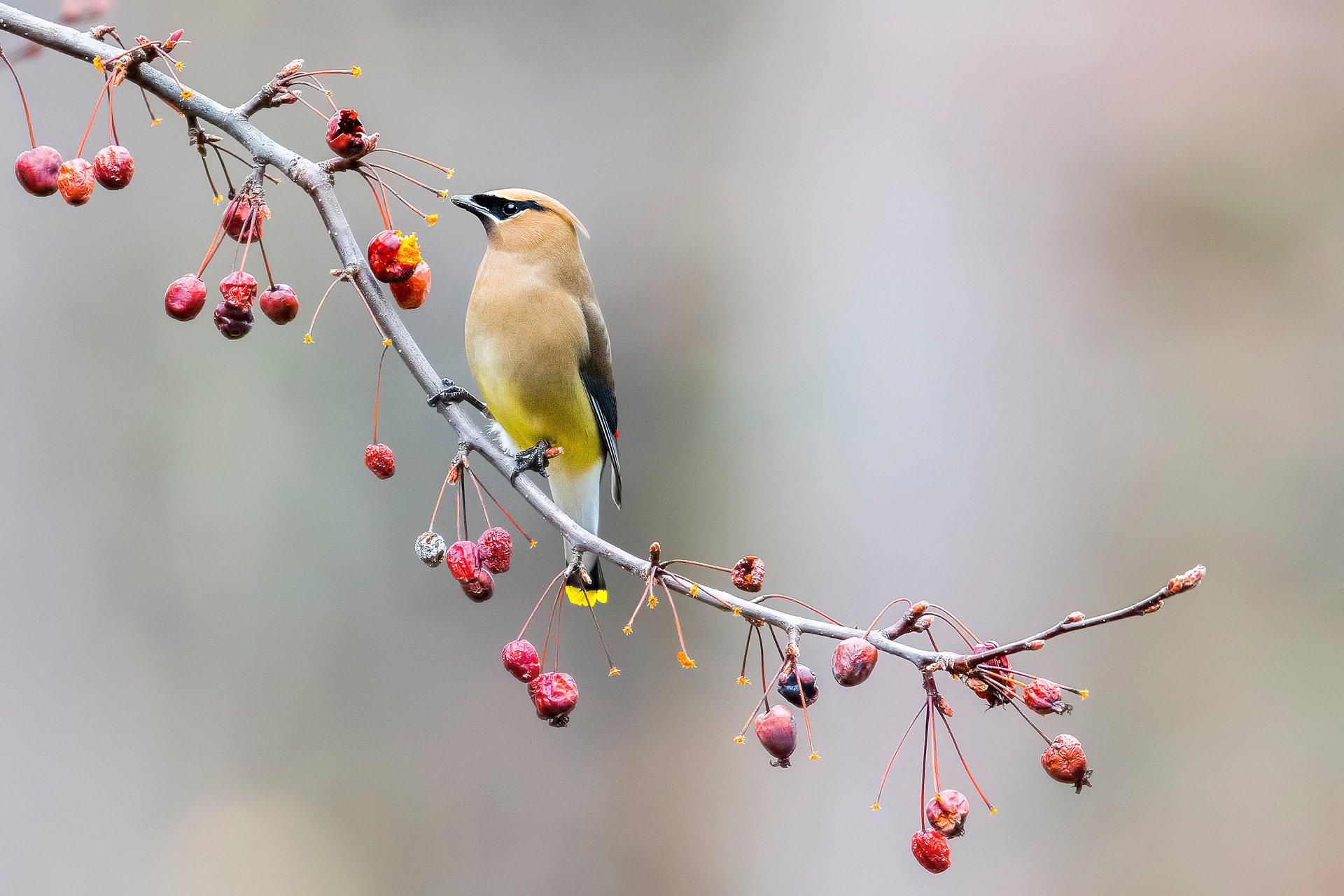Cedar Waxwings
Cedar Waxwings can be seen year-round in Massachusetts, and these robust “frugivores” appear to be stable or increasing in all seasons. Although bird feeders hold no attraction for them, Cedar Waxwings may come to visit your winter yard if you have any plants that bear fruits or berries.
Many birds will eat fruit when it is available, but the so-called “cherry bird” is a fruit specialist, and a berry-laden bush can be an irresistible lure to a flock of waxwings in the depths of winter.
How to Identify Cedar Waxwings
Cedar Waxwings have remarkably smooth and silky-looking brown plumage. Both sexes sport a small crest like a cardinal, as well as a black mask across the eyes. A waxwing’s lower wings, back, and tail are mostly a cold gray, but the bright yellow band at the end of the tail is an excellent field mark. The name “waxwing” comes from the waxy red tips that form on the birds’ secondary wing feathers.
A small family, waxwings are so named because of the colorful, wax like secretions on the tips of their wings.
Cedar Waxwing Behavior
What Do Cedar Waxwings Eat?
In the warmer months, waxwings can be seen hawking for insects to feed their hungry babies, often foraging in forest clearings or over water. During the fall and winter, however, it’s all about fruit.
Flocks of waxwings will fly together, perching on twigs and gobbling down the fruits of any plant they can find, including the fleshy cones of juniper and cedar. Thanks to its love of berries and soft fruits, the Cedar Waxwing can occasionally be found behaving erratically after ingesting berries that have already begun to ferment, becoming drunk!
What Do Cedar Waxwings Sound Like?
Their high, thin calls are easy to recognize once learned.
Cedar Waxwing Call
How Mass Audubon is Supporting Birds in Massachusetts
Mass Audubon works at our wildlife sanctuaries and beyond to ensure that the nature of Massachusetts continues to thrive. By scientifically monitoring Massachusetts birdlife, Mass Audubon informs important conservation decisions and launches targeted initiatives to help at-risk species. In addition, fostering healthy habitats, supporting native species, and educating people about the importance of nature conservation is critical to our success. Learn more about our work
How You Can Support Birds in Massachusetts
Mass Audubon supports birds like the Cedar Waxwing every day, but we couldn’t do it without the support of our 160,000+ members.
Help support Cedar Waxwings, and birds like them, by becoming a member today.
Upcoming Bird Programs
Bird Research in Action
-
Wellfleet Bay Wildlife Sanctuary, South Wellfleet
-
Friday, May 9
8:30-9:30am
Adults & Families - 8 - 17
Evening Bird Walk
-
Wachusett Meadow Wildlife Sanctuary, Princeton
-
Friday, May 9
6:00-8:00pm
Adults
Birding in Place
-
Broad Meadow Brook Conservation Center and Wildlife Sanctuary, Worcester
-
Saturday, May 10
7:30-11:00am
Adults
Stay Connected
Don't miss a beat on all the ways you can get outdoors, celebrate nature, and get involved.






